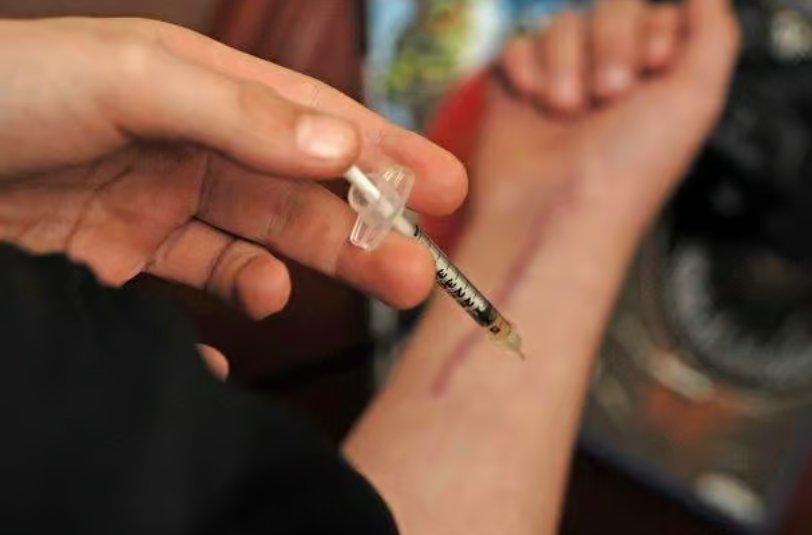Scotland has recorded its lowest number of drug-related deaths since 2017, with new figures showing a notable drop in 2024. National Records of Scotland data released on September 2, 2025, report 1,017 deaths from drug misuse last year, down 13 percent from 1,172 in 2023.
Key Figures and Trends
This decline marks a positive shift in Scotland’s ongoing battle with drug misuse. Experts point to increased harm reduction efforts and better access to treatment as key factors. Yet, the country still leads Europe in drug death rates, highlighting the need for more action.
The age-adjusted death rate stands at 19.1 per 100,000 people, more than triple the rate from 2000. Males account for over twice as many deaths as females. Most victims fall between 35 and 54 years old.
Opiates and opioids played a role in 80 percent of cases. Benzodiazepines appeared in 56 percent, cocaine in 47 percent, and gabapentin or pregabalin in 37 percent.
People in deprived areas face 12 times the risk compared to those in wealthier zones. This gap underscores how poverty and access to services fuel the crisis.

Regional Breakdown
Glasgow City saw the biggest drop, with 61 fewer deaths than in 2023. Edinburgh and North Lanarkshire followed, with 19 and 18 fewer deaths respectively. These urban areas have large populations and high drug use rates, but targeted programs seem to help.
In contrast, some rural spots like the Highlands reported fewer deaths too, down from 26 in 2023 to 21 in 2024. Aberdeen also noted a decline, aligning with national trends.
Aberdeenshire and East Renfrewshire had the lowest rates per 100,000 people. Dundee, however, topped the list alongside Glasgow for highest rates.
| Region | Deaths in 2024 | Change from 2023 |
|---|---|---|
| Glasgow City | Not specified, but highest drop | -61 |
| Edinburgh | Not specified | -19 |
| North Lanarkshire | Not specified | -18 |
| Highlands | 21 | -5 |
| Aberdeen | Decrease noted | Aligned with national 13% drop |
| Dundee | High rate | No specific drop number |
This table shows how declines vary by area, with urban centers leading the reductions.
Expert Views and Challenges
Health professionals welcome the drop but warn of emerging threats. Synthetic opioids like nitazenes have surged in early 2025, causing 76 deaths in the first three months alone. This rise threatens to reverse gains.
One expert noted that frontline workers in treatment and emergency services deserve credit for their tireless efforts. They provide naloxone kits and support that save lives daily.
Government officials express condolences to families and pledge continued action. Policies include expanding naloxone access in pharmacies and pushing for safer consumption sites.
Critics argue more needs to happen fast, especially with poverty driving misuse. Recent data from early 2025 shows suspected deaths climbing, with a 33 percent jump from January to March compared to prior quarters.
- Harm reduction measures: Naloxone distribution has increased, reversing overdoses on the spot.
- Treatment access: More funding for rehab programs targets high-risk groups.
- Drug checking services: Calls grow for these to detect dangerous substances like nitazenes.
- Supervised sites: Plans for facilities where users can consume safely under medical watch.
Looking Ahead
Scotland’s drug strategy focuses on prevention, treatment, and reducing stigma. Recent events, like the influx of potent synthetics, add urgency. Compared to past years, 2024’s drop follows a 21 percent decline from 2021 to 2022, showing momentum.
Yet, with 1,017 lives lost, each one a tragedy, the fight continues. Ties to broader issues like mental health and economic inequality demand holistic solutions.
International comparisons reveal Scotland’s rate remains Europe’s highest, pushing leaders to learn from countries with lower figures.
Impact on Communities
Families and communities bear the brunt of these losses. Stories from affected groups highlight the human cost, from parents losing children to friends mourning peers.
Support networks have grown, with charities offering counseling and advocacy. Public awareness campaigns aim to educate on risks and encourage help-seeking.
In 2024, cocaine-related deaths stayed high, reflecting shifting drug trends. Mixing substances increases dangers, a pattern seen in many cases.
Early 2025 data suggests a potential uptick, with male deaths rising 44 percent in some periods. Under-25 deaths also spiked, alarming experts.
What do you think about these trends? Share your thoughts in the comments and spread the word to raise awareness.


















